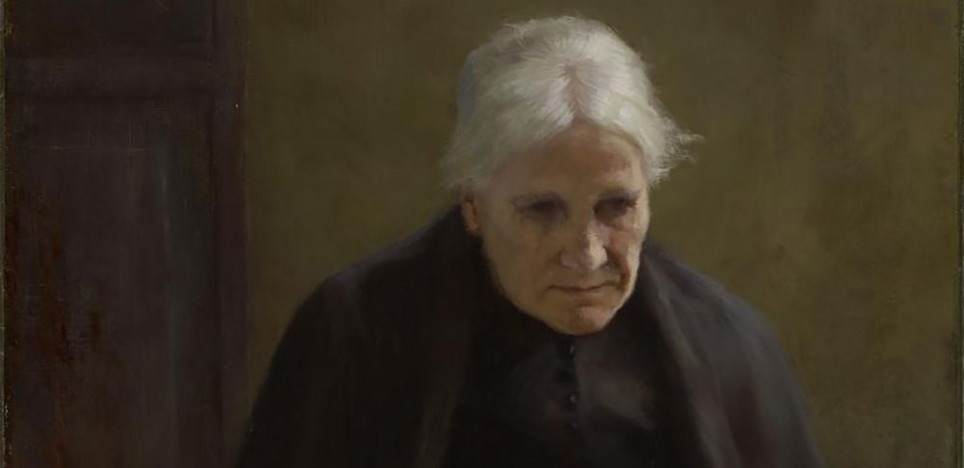In his challenging book Art as Therapy Alain de Botton, a British writer, philosopher, and cultural revolutionary presents a radical reinterpretation of art that makes it more relevant to everyday life and the questions of meaning and purpose. Along with co-author John Armstrong, he champions art as "a therapeutic medium that can help guide, exhort and console its viewers, enabling them to become better versions of themselves."
One of the oil paintings reprinted in this book caught our eye: The Twilight of Life (1894) by Sydney Strickland Tully, a Canadian academic painter. She conveys great respect for an elderly woman who sits in the shadows, draped in a black dress and shawl.
We identify with the yearning in her eyes that seem to be searching the past. Her hands are folded in sweet supplication of the Divine Lover. We can imagine a time when there were no lines on her face and when she welcomed the embrace of strapping lads and jubilant dancers. Now her hair is white but when she was young perhaps it reached half-way down her back. Now she is comfortable in the silence.
As we ponder this picture for its spiritual teachings for us, we take a cue from de Bottom who notes that Tully, the painter, is generous to her: "She looks with great care into her face and wonders who she really is."
And that is exactly the question we are prompted to explore as we gaze on this painting. Old people are said to be in the twilight of their lives as they move slowly toward death. But as this beautiful painting conveys, the inward light of memory, yearning, and silence are gifts of the Spirit during this stage of life.
